Returning to Kraków, Poland from our tour of
Auschwitz on 5 January 2018, Zosia Zgolak
and I headed straight to the city's Old Town as soon as we got off the
bus. Kraków's Old Town is the tourist hub of the city, and we
wandered through many of the streets in the area as well as the main
market square at Sukiennice (Cloth Hall). We also ventured
out to Wawel Castle just to see the Wawel Dragon spit out fire before
returning to our hostel to retire for the night.
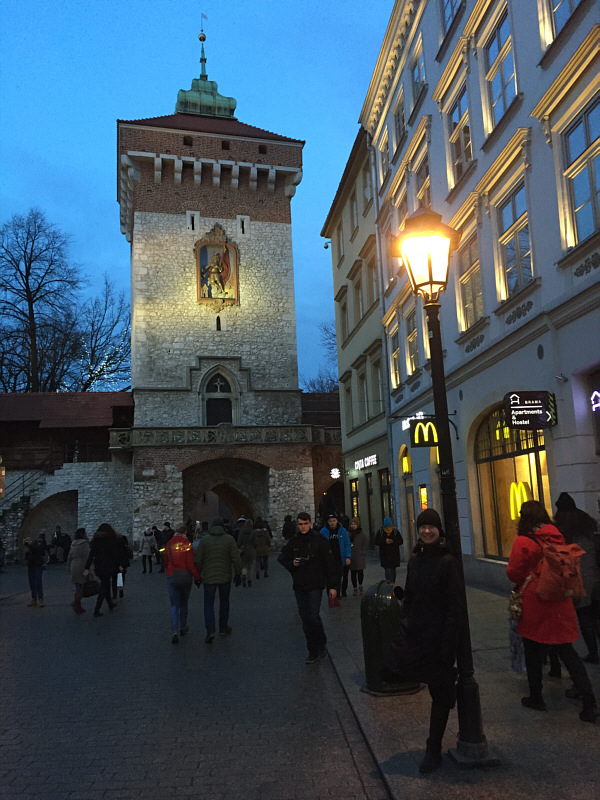 |
St. Florian's Gate is the northern entryway into
Kraków's Old Town. |
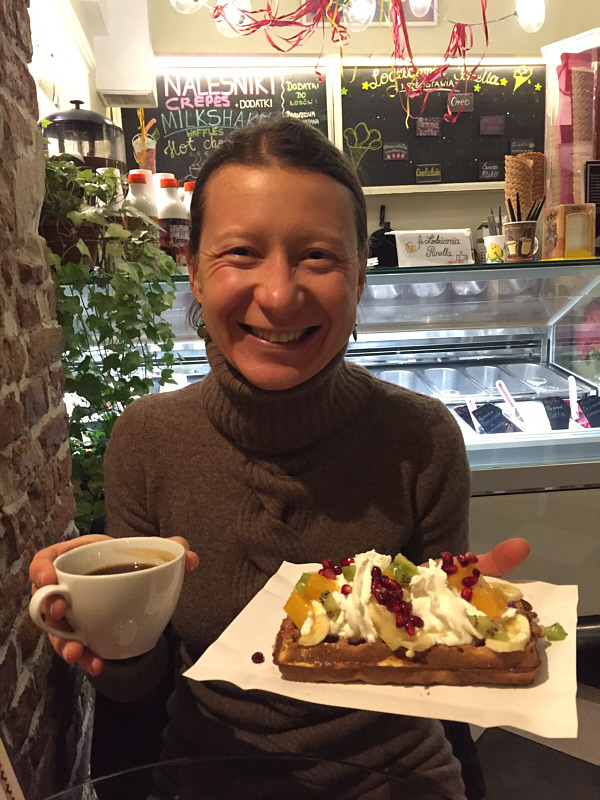 |
Zosia enjoys coffee and gofry
(waffle) at Lodziarnia (ice cream parlour) Rinella. |
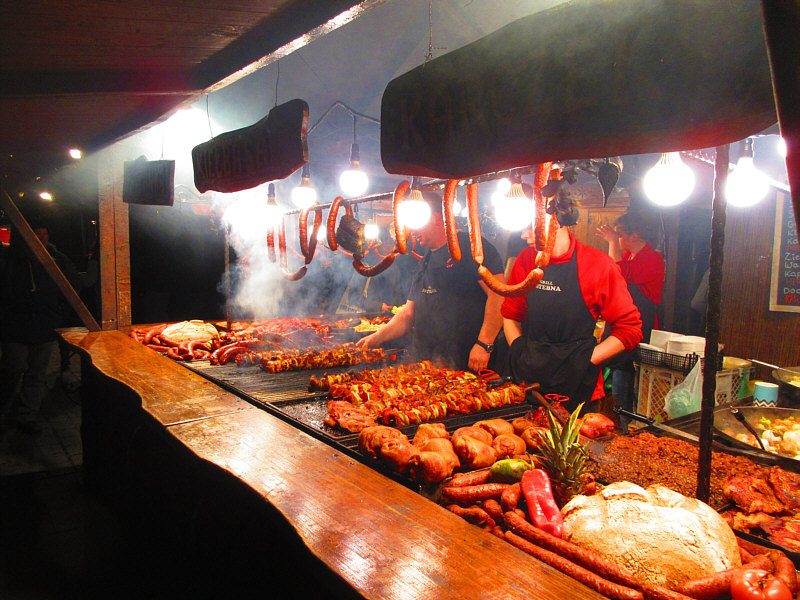 |
Local vendors grill meats and
sausages at Sukiennice in the main market square of Old Town.
Photo courtesy of Zosia Zgolak |
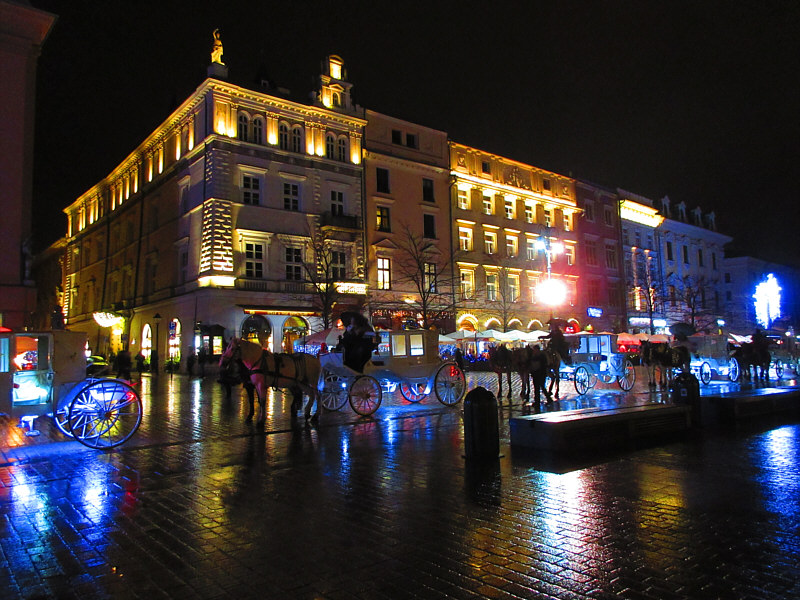 |
Horse carriages await tourists near
Sukiennice.
Photo courtesy of Zosia Zgolak |
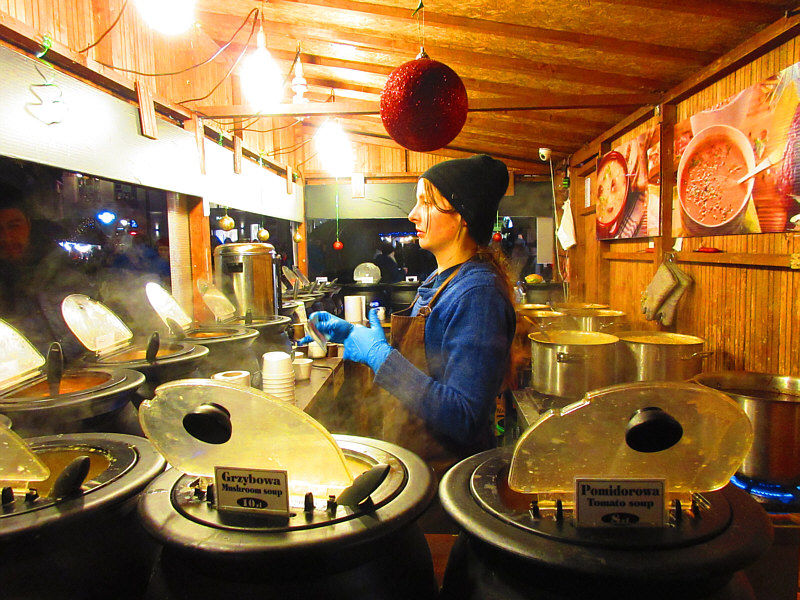 |
Business is incredibly brisk for this
soup vendor in Sukiennice. Photo courtesy
of Zosia Zgolak |
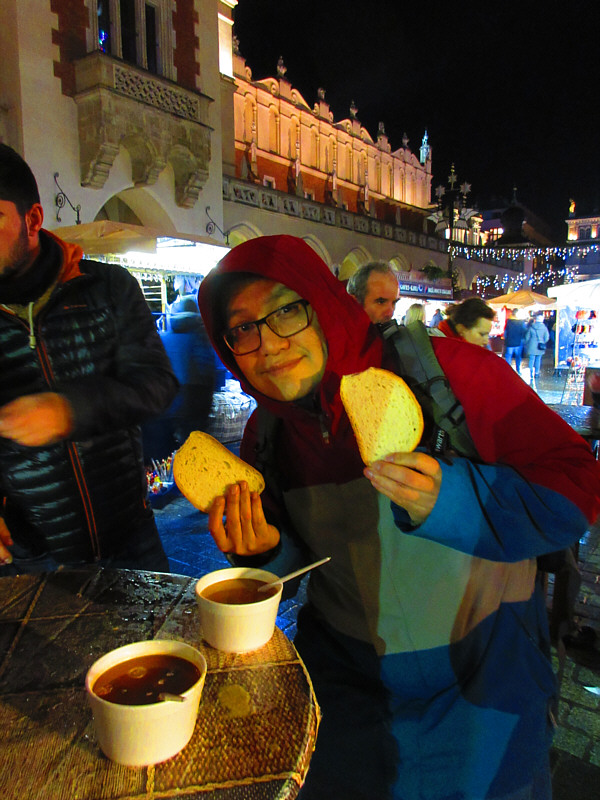 |
Sonny tries to enjoy his soup and
bread under some light rain.
Photo courtesy of Zosia Zgolak |
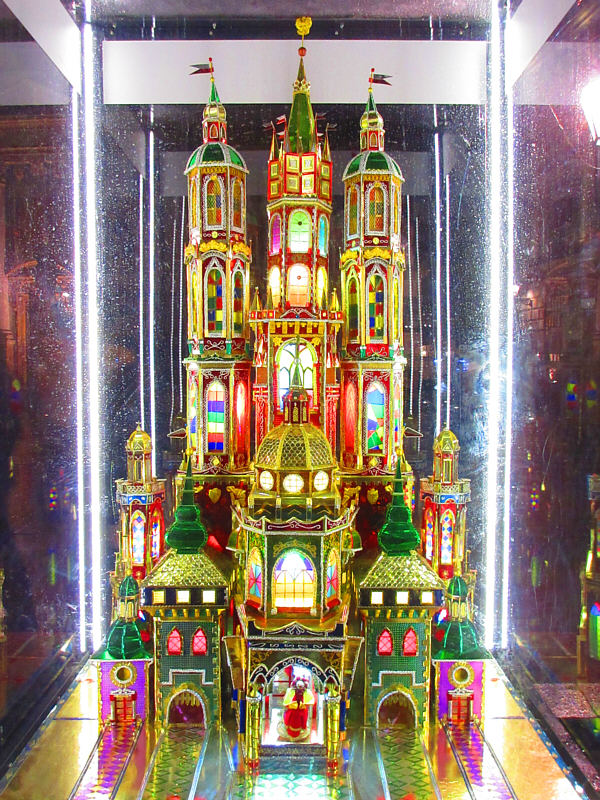 |
A
Christmas tradition which originated in Kraków is the building of a
Szopka (nativity scene) which utilizes elements of the city's
historical architecture to create an elaborate backdrop for the birth
of Jesus Christ. The Szopkas can range in size up to a couple
of metres high, and some even have mechanical parts that can move.
A Szopka-making competition is held annually at the main market
square of
Kraków.
Photo courtesy of Zosia Zgolak |
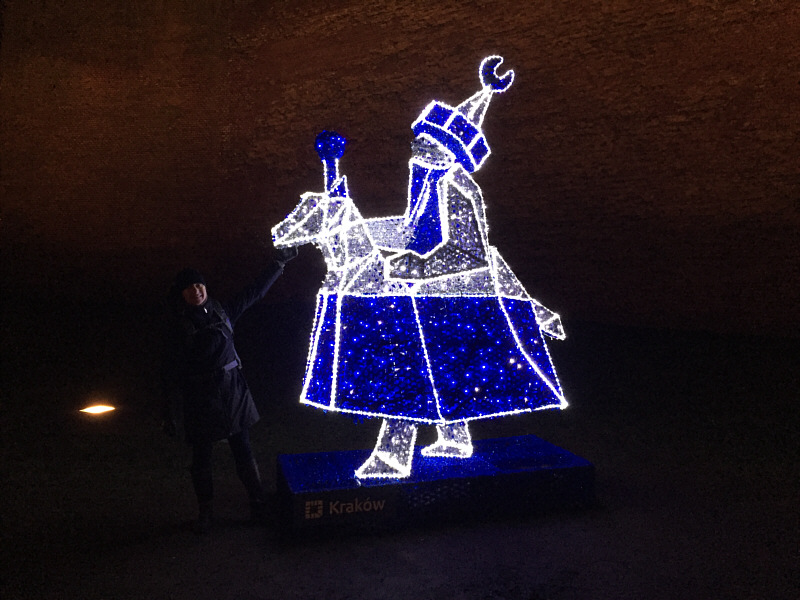 |
Lajkonik, a man dressed in Mongol attire riding a hobby horse, is one
of the unofficial symbols of Kraków. This lighted version
stands just outside Wawel Castle. |
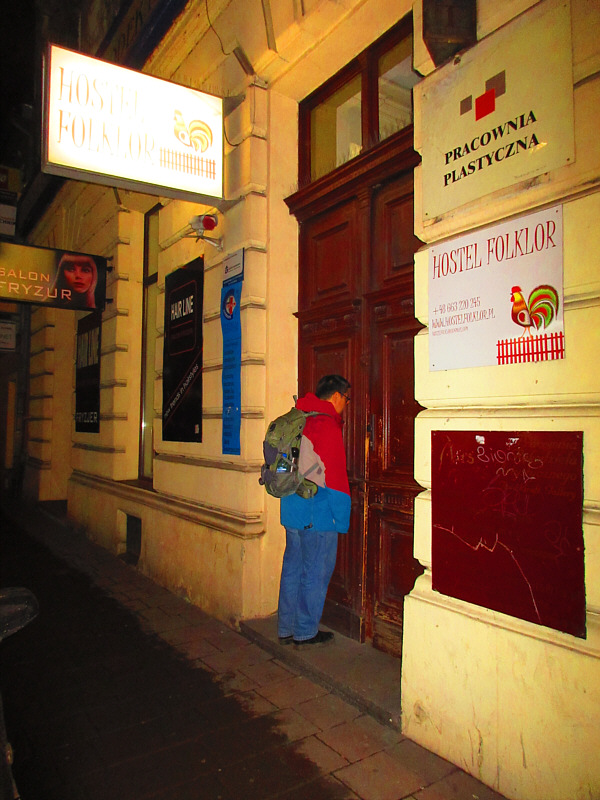 |
After a very long day touring
Auschwitz and walking all over Kraków's
Old Town, Sonny is relieved to be returning to the hostel for
a good night's rest.
Photo courtesy of Zosia Zgolak |
On the morning of 6 January 2018, Zosia and I rendezvoused with
Gosia Zakrzewska and her parents, Teresa and Stanisław. They had
come to Kraków from Łódź for the weekend in order to attend an art
exhibition the next day, but on this day, we celebrated Epiphany or Three
Kings' Day by heading to Wawel Castle to see one of three religious
processions that traditionally begin from three different cathedrals in
the city and which ultimately converge at the main market square. A
church mass normally precedes each procession, but the one at Wawel
Cathedral went much longer than expected. As a result, we waited
for over an hour before the procession finally got underway.Rather
than follow the procession, we opted instead to visit the National Museum
Palace of Bishop Erasmus Ciolek on Kanonicza Street. This museum's
exhibits consist mostly of paintings and sculptures from medieval Poland
including artifacts from churches that have long disappeared. After
the tour of the museum, we ended up back at the main market square.
One of the unique traditions in Kraków is the Hejnał Mariacki or
St. Mary's Trumpet Call, a five-note anthem which is played by a bugler
four times in succession (for each of the four cardinal directions) every
hour on the hour from one of the towers of St. Mary's Basilica in the
main market square. The city employs four buglers who work rotating
shifts to maintain this tradition. Legend has it that during a
Mongol invasion, a sentry played the Hejnał to alert Kraków's inhabitants
so that they could shut the city's gates and prevent an ambush.
Tragically, the sentry's playing of the anthem was cut short when he was
killed by an arrow through his throat. To this day, the playing of
the Hejnał is always abruptly cut off to commemorate the moment of the
legendary sentry's death.
Gosia and her parents treated Zosia and me to a late lunch at
Kuchnia U Babci Maliny (Granny's Raspberry Kitchen), a traditional
Polish eatery which is located under the Polish Academy of Arts and
Sciences building. We spent the rest of the day touring some more
of Old Town before parting ways with Gosia and her parents in the
evening.
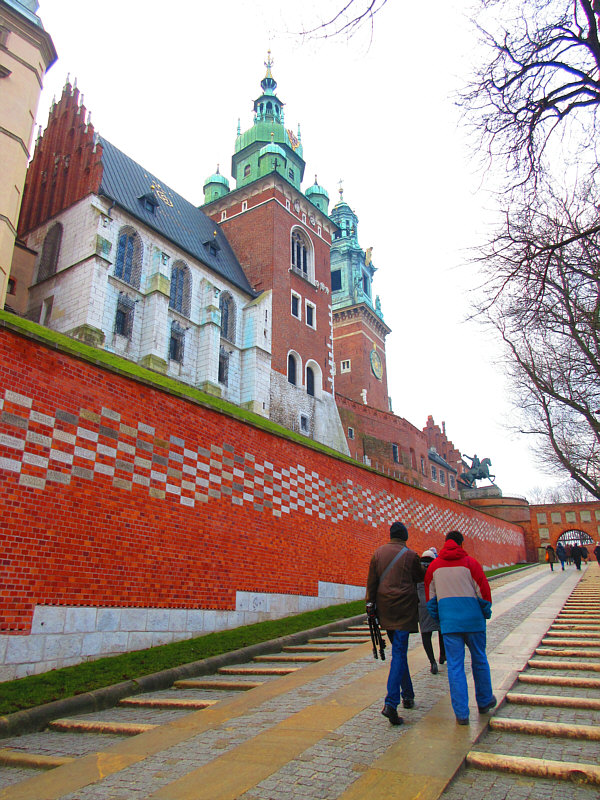 |
Stanisław and Sonny walk up to the north
entrance of Wawel Castle.
Photo courtesy of Zosia Zgolak |
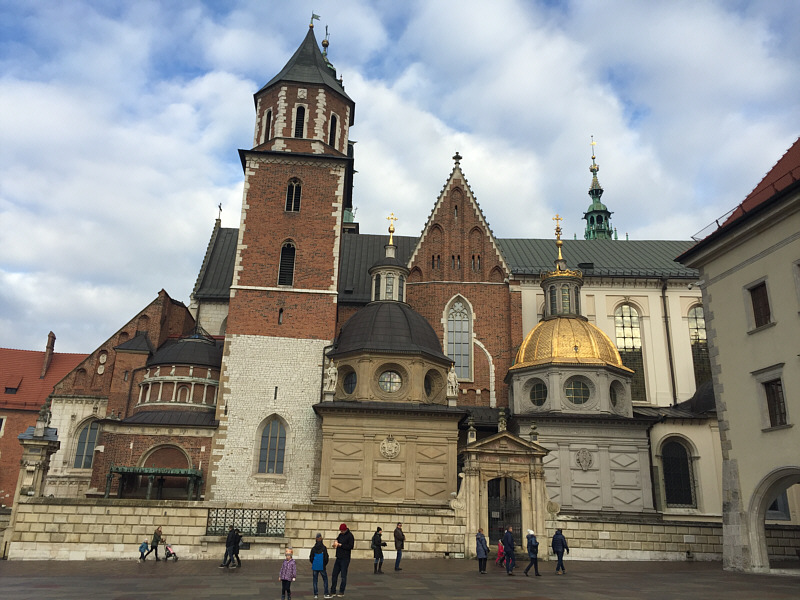 |
Wawel Cathedral is over 900 years
old and is the third structure built on this site. The
attachment with the gold dome is known as Sigismund's Chapel and is
named after Sigismund I the Old who was King of Poland from 1506 to
1548. |
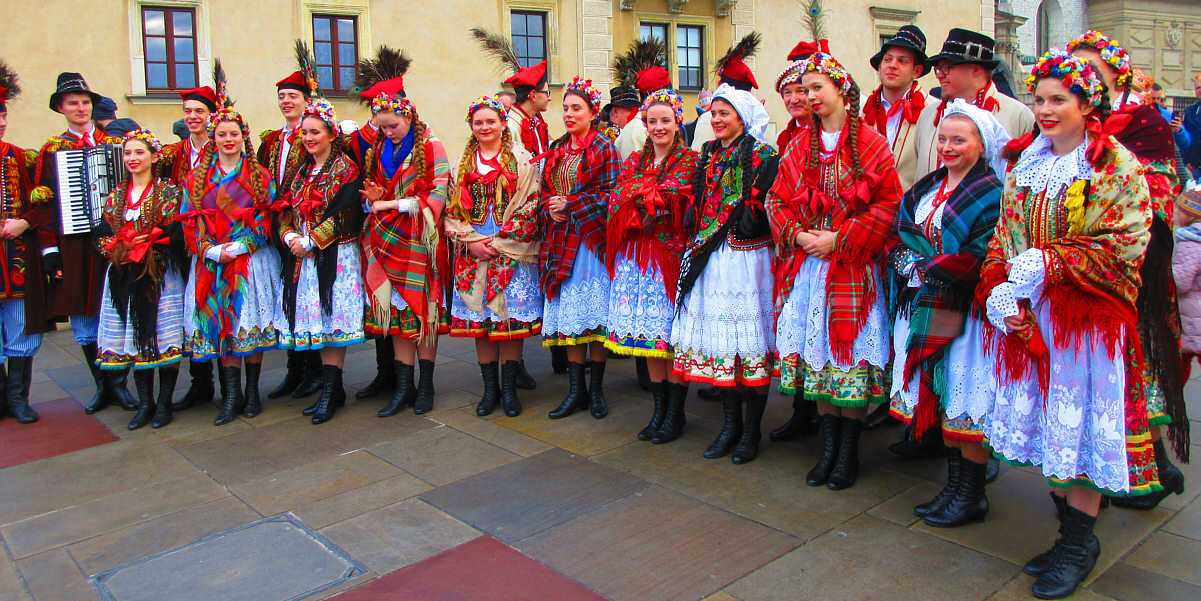
Gathered for the procession are some Poles dressed in
traditional costumes. Note the two women wearing white kerchiefs on
their heads which usually signifies that they are married.
Photo courtesy of Zosia Zgolak
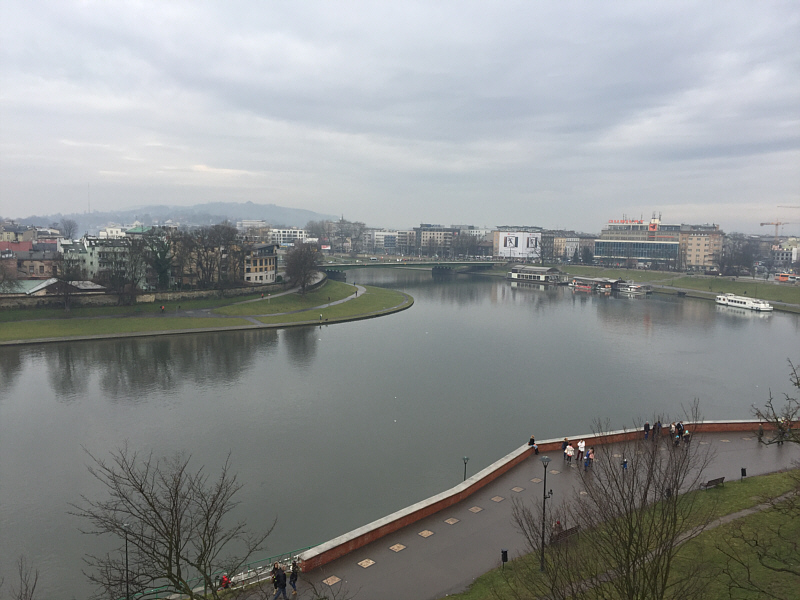 |
This is the view to the west from
Wawel Castle overlooking Vistula River. On the left horizon is
Kościuszko Mound, an artificial hill built in 1820 to commemorate the
Polish military hero, Tadeusz Kościuszko. |
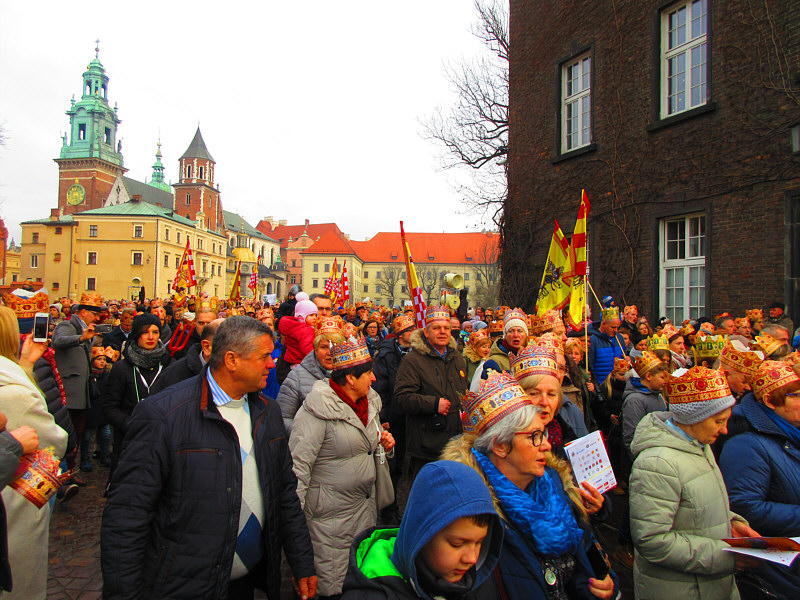 |
After a long delay, the Three Kings'
Day procession finally gets under way from Wawel Cathedral. Photo courtesy of Zosia
Zgolak |
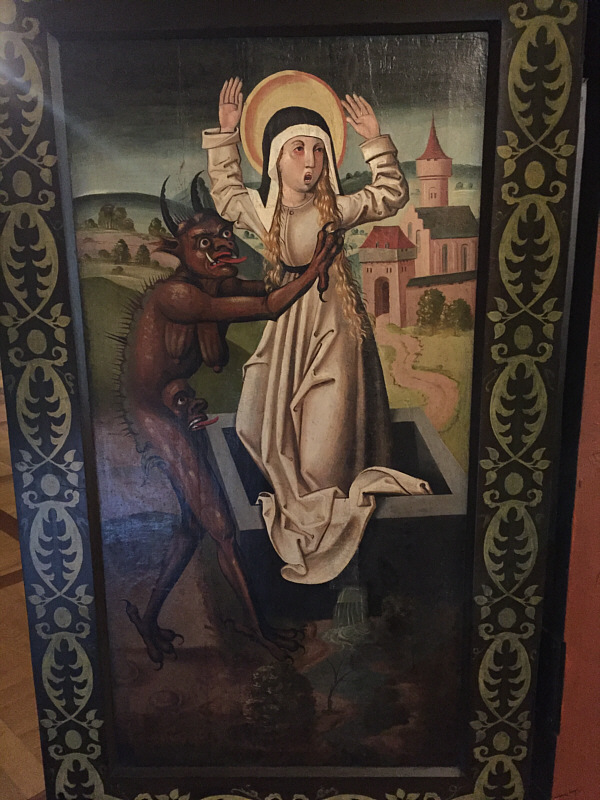 |
While all the artwork displayed at
the National Museum Palace of Bishop
Erasmus Ciolek have some religious significance, this work on the
backside of an altarpiece is downright bizarre. |
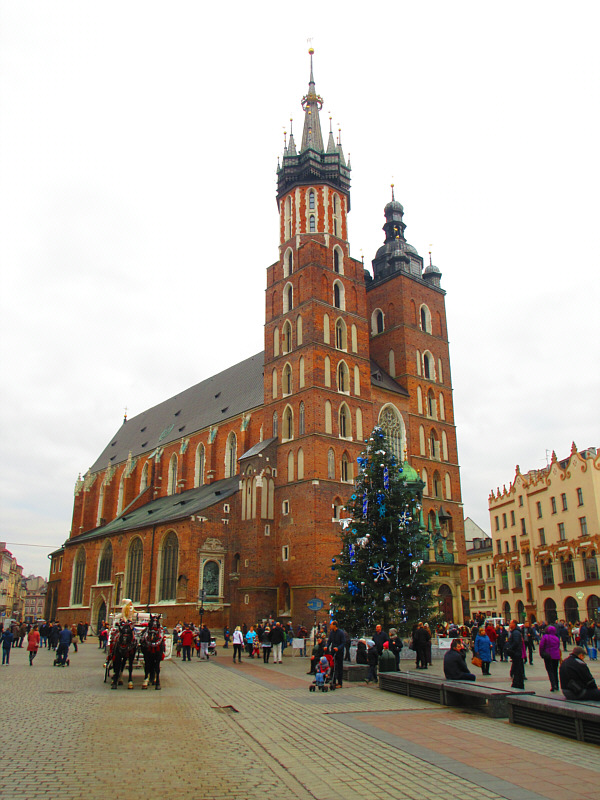 |
Every hour on the hour, the Hejnał Mariacki
is played by a bugler from the higher of the two towers of
St. Mary's Basilica in the main market square. The discrepancy in
height between the two towers is explained in a popular legend about
two brothers who were tasked to build each tower separately.
When the younger brother realized that his tower was shorter, he
murdered the older brother with a knife out of envy.
Consequently, construction halted for one of the towers. Later
filled with guilt, the younger brother committed suicide by stabbing
himself with the same knife and plummeting to death from his tower.
In nearby Sukiennice, there is a knife that hangs
inconspicuously from the corner of an archway. There is no
placard explaining the hanging knife, but it is generally
acknowledged to be the same one from the legend.
Photo courtesy of Zosia Zgolak |
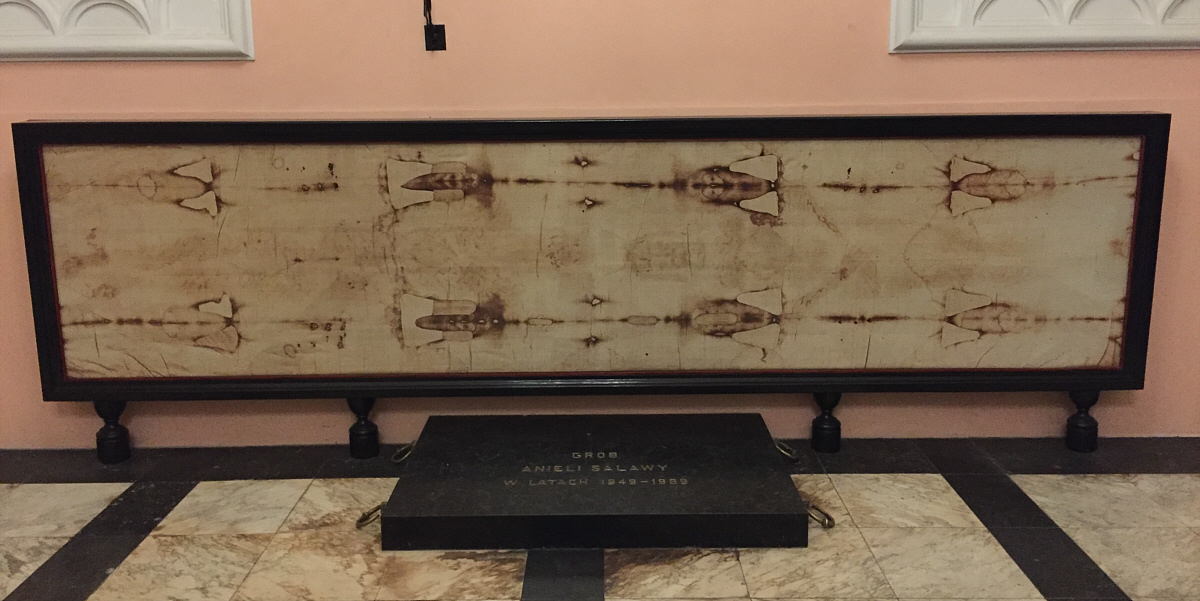
A consecrated exact replica of the famous Shroud of Turin (purportedly
the burial cloth of Jesus Christ) can be found in the Church of St.
Francis of Assisi which is about a block south of the main market square.
On 7 January 2018, Zosia and I started the morning with a walk to Wawel
Castle. We got there a bit too early and decided to kill some time
by visiting an open air market in nearby Kazimierz district. Upon
returning to Wawel Castle, we toured a couple of museums there including
the State Rooms (the interior rooms of the castle) and The Lost Wawel (on
site archaeological exhibits). We also visited the crypts below
Wawel Cathedral, but I had the most fun climbing up the steep ladders in
the cramped space of Sigismund Tower to see Sigismund Bell.
In the evening, we once again hooked up with Gosia and her parents, and
together, we attended a free Christmas concert at the Kraków
Philharmonic. The concert featured a full choir accompanied by a
small orchestral ensemble and also included readings given by a
well-known Polish actor. My favourite performance though was that
of the pipe organist who opened both halves of the concert with fantastic
renditions of classic Christmas Carols.
After the concert, Gosia and her parents invited Zosia and me back to
their rented apartment for snacks and liquid refreshments to round out
the day.
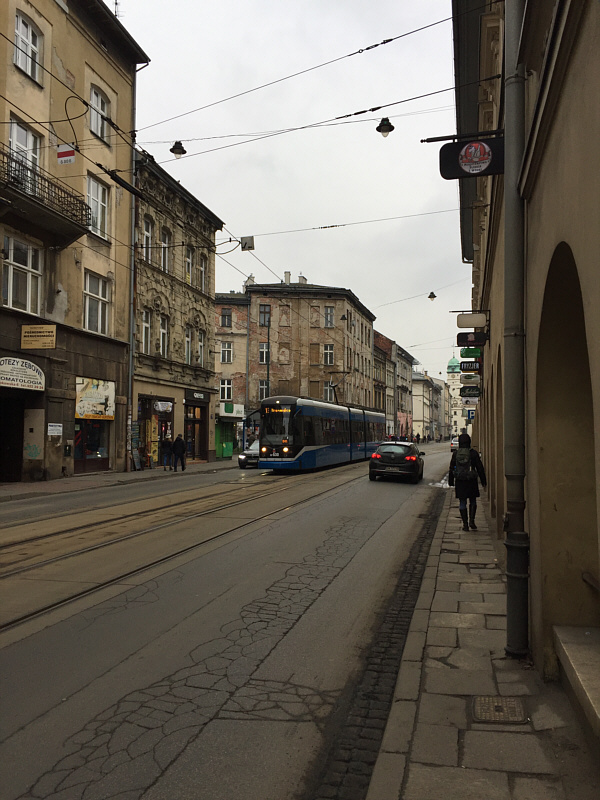 |
Zosia walks along Krakowska Street
in the Kazimierz district. Much of Steven Spielberg's 1993
film, Schindler's List, was shot in this district. |
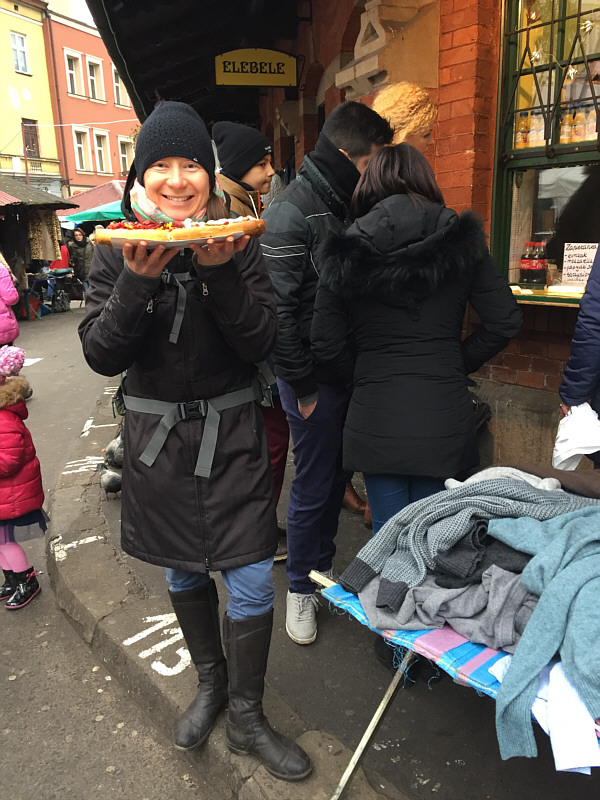 |
Zosia purchases a zapiekanka
which is like a pizza on a baguette. |
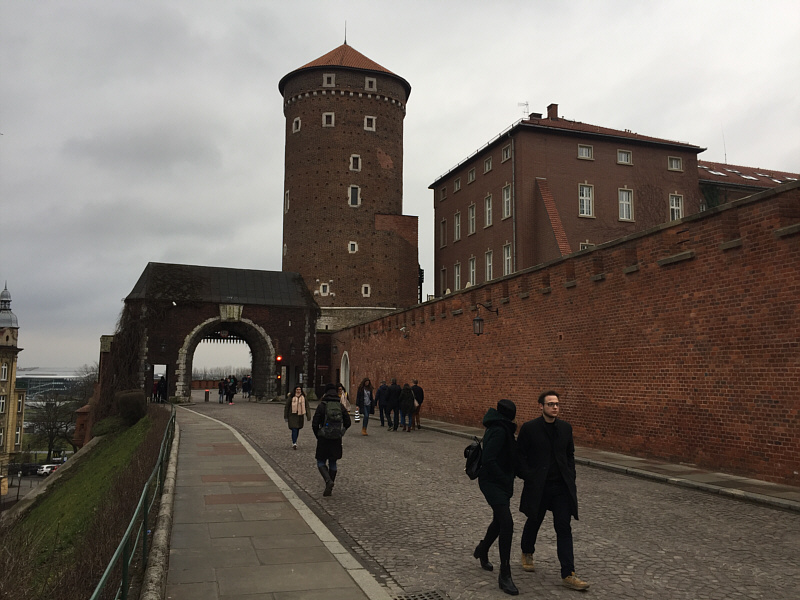 |
Zosia returns to Wawel Castle via
its south entrance. |
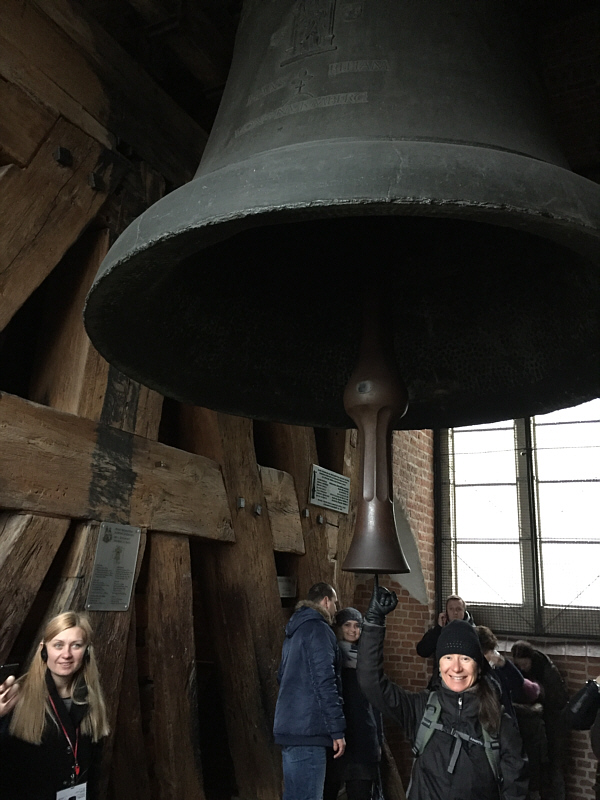 |
Sigismund Bell is the largest of
five bells in its namesake tower at Wawel Cathedral. The bell
weighs about 12,600 kilograms and requires about 12 bell-ringers to
swing it. |
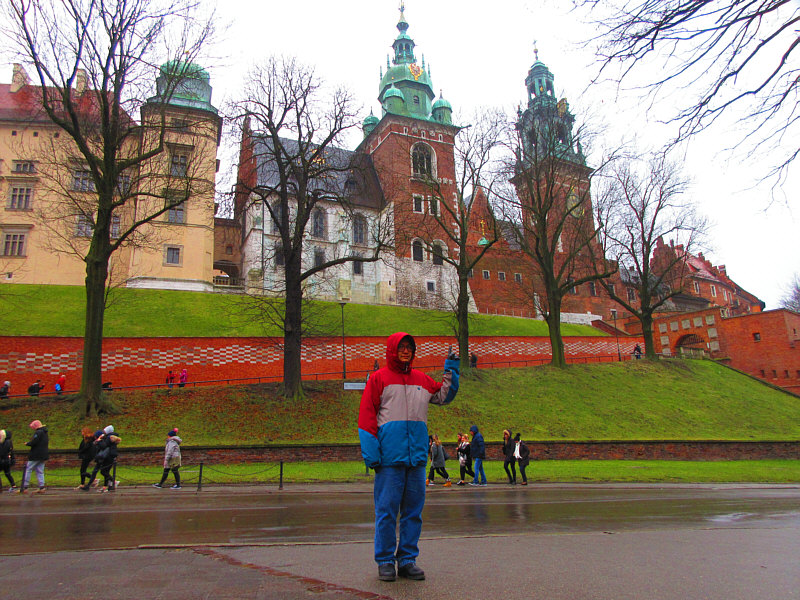 |
Outside Wawel Castle, Sonny points
to Sigismund Tower (centre).
Photo courtesy of Zosia Zgolak |
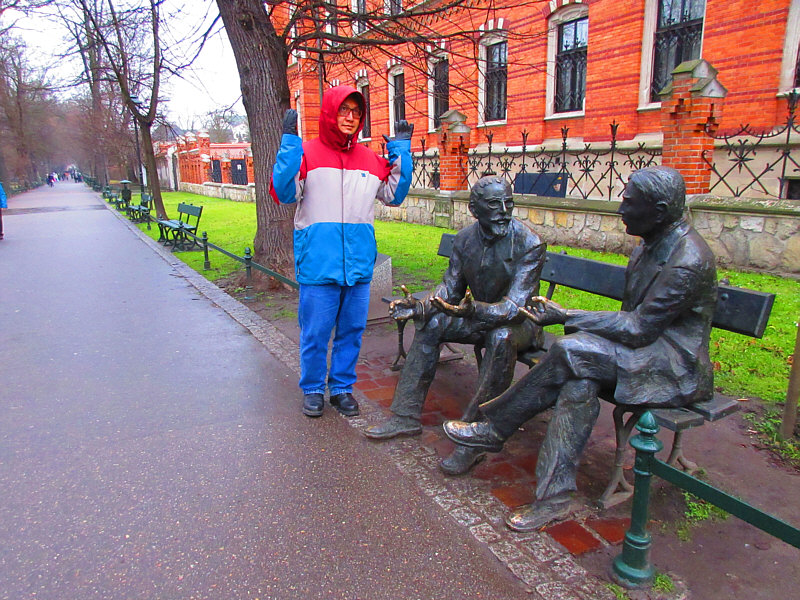 |
The conversation between two Polish
mathematicians, Otto Nikodym (left) and Stefan Banach, seems to go
over Sonny's head. Another mathematician, Hugo Steinhaus (not
immortalized here--Sonny will have to stand in for him), overheard
the conversation supposedly at this very spot just north of
Wawel Castle in 1916 which resulted in a long and fruitful
collaboration between him and Banach.
Photo courtesy of Zosia Zgolak |
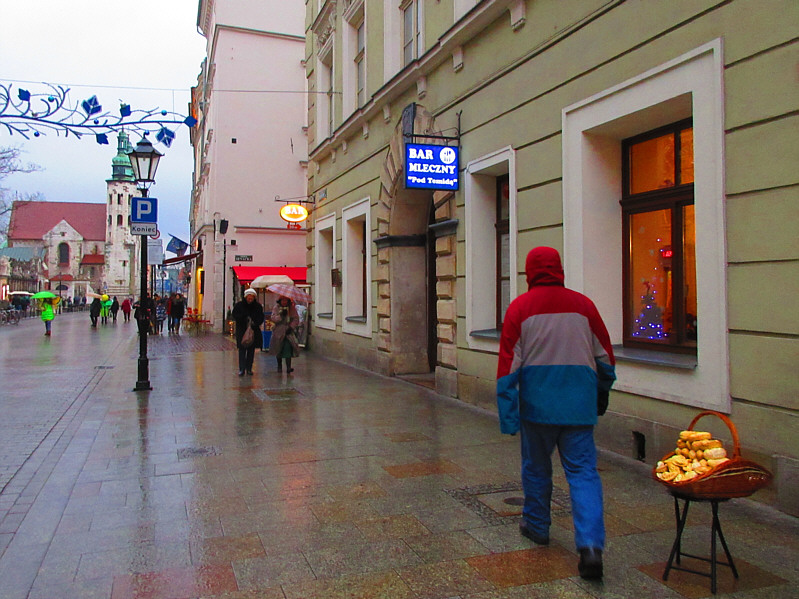 |
On Grodzka Street, Sonny heads for
Bar Mleczny (literally, "milk bar") which is a traditional
Polish cafeteria.
Photo courtesy of Zosia Zgolak |
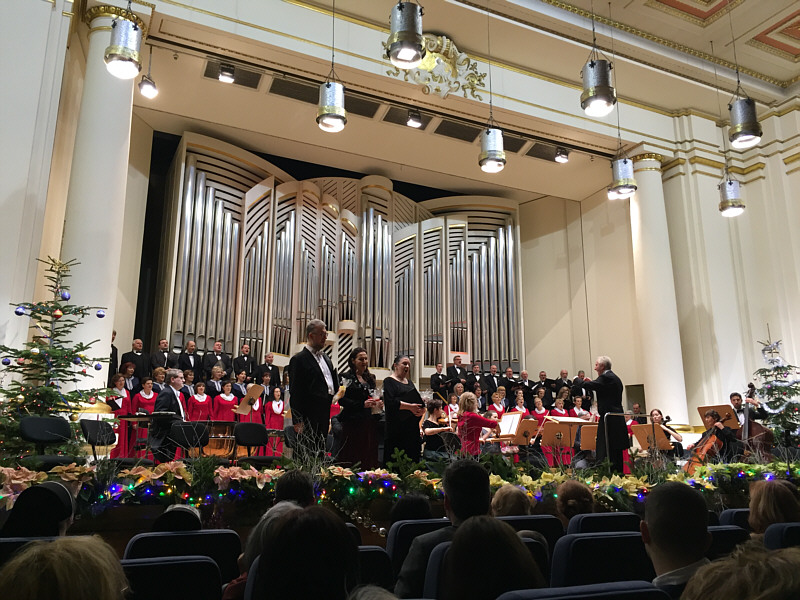 |
Three soloists sing in front of the
choir and orchestral ensemble at the
Kraków Philharmonic. |
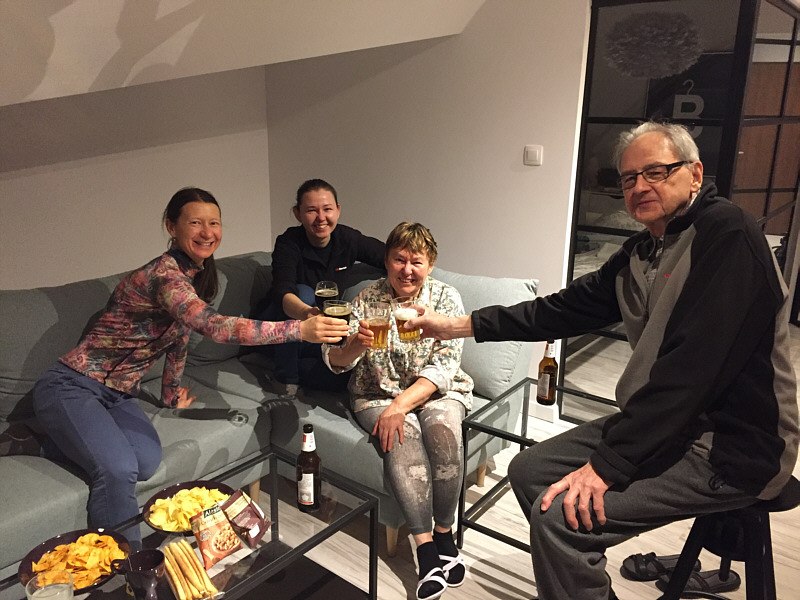 |
Zosia, Gosia, Teresa and
Stanisław share a post-concert drink. |

























